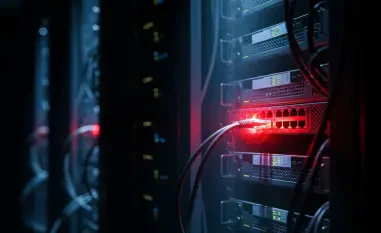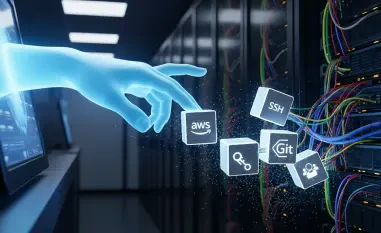In the fast-paced world of cybersecurity, Malik Haidar stands out as an expert with a deep understanding of defending against complex threats. With a rich background in analytics, intelligence, and integrating business insights into security strategies, Malik offers invaluable perspectives on current vulnerabilities. In today’s discussion, we delve into recent critical issues affecting Cisco’s Identity Services Engine.
Can you explain the nature of the recently discovered critical-severity vulnerability in Cisco Identity Services Engine (ISE) and ISE Passive Identity Connector (ISE-PIC)?
The critical vulnerability in question relates to the potential for remote code execution, which is a serious concern. Specifically, it affects the API of both Cisco ISE and ISE-PIC. The flaw could allow an unauthenticated attacker to execute arbitrary code on the underlying operating system as a root user, essentially gaining full control without any valid credentials. This vulnerability poses significant risks, especially since root access can lead to extensive damage or data breaches.
What are the specific vulnerabilities tracked as CVE-2025-20281 and CVE-2025-20282 mentioned in Cisco’s advisory?
These vulnerabilities are part of a group of critical flaws impacting the same API within Cisco ISE and ISE-PIC. They have a high potential for severe exploitation, enabling remote attackers to execute code without credentials. These vulnerabilities underline the importance of rigorous API validation, as they stem from the lack of sufficient validation of user-supplied input.
What is the latest CVE added to Cisco’s list of critical vulnerabilities, and what is its CVSS score?
The most recent CVE added to the list is CVE-2025-20337. It carries a maximum CVSS score of 10 out of 10, indicating its critical severity. This score reflects the potential impact and ease with which the vulnerability could be exploited, mirroring the severity of the previous vulnerabilities mentioned.
How do these vulnerabilities impact the underlying operating system of Cisco ISE and ISE-PIC?
The vulnerabilities primarily impact the operating system by allowing unauthorized access to execute commands as a root user. This level of access provides an attacker with complete control over the affected systems, making it possible to alter system configurations, access sensitive data or impose malicious software.
What versions of Cisco ISE and ISE-PIC are affected by these vulnerabilities?
The affected versions are Cisco ISE and ISE-PIC 3.3 and 3.4. Users operating on these versions will need to take prompt action to mitigate the risk posed by these vulnerabilities.
In which versions were these vulnerabilities addressed?
Cisco addressed these vulnerabilities in version 3.3 patch 7 and version 3.4 patch 2. Applying these patches is essential to protect against potential exploits.
Could you provide details on the high-severity vulnerability CVE-2025-20274 mentioned in the article?
CVE-2025-20274 is a high-severity flaw found in the web-based management interface of the Unified Intelligence Center. It involves improper validation of uploaded files, allowing authenticated attackers to upload and store malicious files. This can lead to executing commands with elevated privileges, increasing the risk of severe system compromises.
How does the CVE-2025-20274 flaw impact the Unified Intelligence Center?
The flaw impacts the Unified Intelligence Center by permitting attackers to elevate privileges and potentially execute arbitrary commands with root access. This vulnerability could lead to unauthorized actions, data leaks, or disruptions in services if exploited.
What actions should users of Unified CCX versions 12.5(1) SU3 and earlier take in response to the CVE-2025-20274 vulnerability?
Cisco recommends that users of the affected Unified CCX versions migrate to version 15, which is not impacted by this vulnerability. This migration helps ensure that users are protected from potential exploits enabled by CVE-2025-20274.
Can you elaborate on the medium-severity security defects announced by Cisco in ISE, ISE-PIC, and other software?
These medium-severity defects, though less critical than their high-severity counterparts, still warrant attention. They affect multiple software, including Evolved Programmable Network Manager and Prime Infrastructure. Fixes for these issues are necessary to maintain robust security postures and protect systems from becoming gateways for more severe attacks.
Are there any known cases of these vulnerabilities being exploited in the wild?
As of now, Cisco has not reported any active exploitation of these vulnerabilities in the wild. However, given their critical nature, it’s essential for users to apply the recommended patches promptly to preempt potential risks.
Where can one find additional information on these security vulnerabilities addressed by Cisco?
Cisco’s security advisories page is the best resource for detailed information on all addressed vulnerabilities. It provides updates on discovered issues, associated CVEs, and the necessary patches to maintain security.
Why is it significant that Cisco has alerted users about these vulnerabilities despite no current exploitations being reported?
It’s significant because proactivity is key in cybersecurity. By alerting users before any exploitations occur, Cisco provides an opportunity to patch vulnerabilities preemptively. This approach minimizes risk and prevents potential data breaches or system compromises.
What preventative measures can organizations take to mitigate the risk of such vulnerabilities in the future?
Organizations should implement regular updates and patch management processes to address vulnerabilities swiftly. Additionally, conducting frequent security assessments, training staff on cybersecurity best practices, and employing advanced intrusion detection systems can significantly mitigate risk and enhance overall security resilience.













